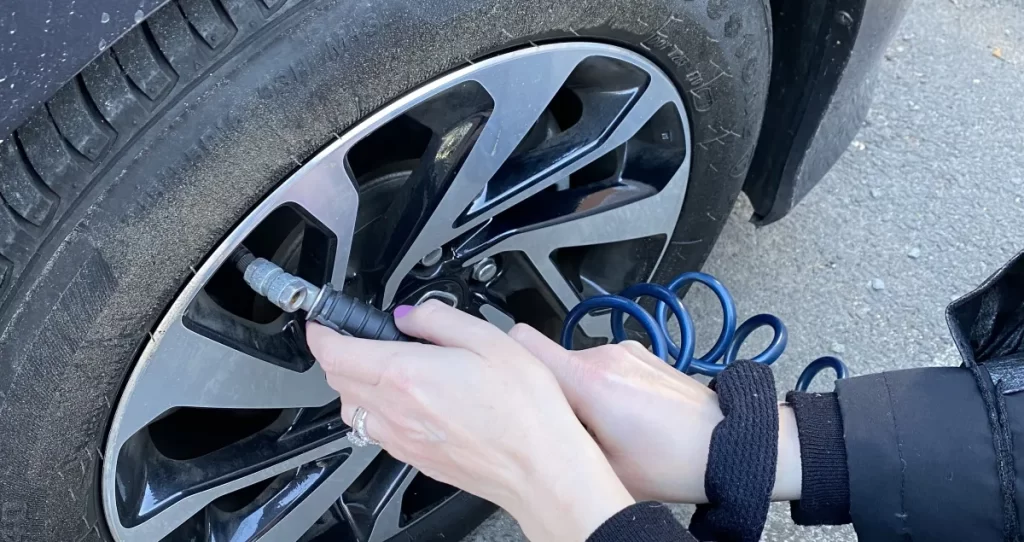How to Put Air in Your Tire at a Gas Station: A Comprehensive Guide
Maintaining proper tire pressure is crucial for vehicle performance, safety, and fuel efficiency. One of the most convenient places to inflate your tires is at a gas station. This article will provide a detailed, step-by-step guide on how to put air in your tires at a gas station, covering everything from preparation to execution. Additionally, we will include an FAQ section and a table summarizing key information.
Importance of Proper Tire Pressure
Before diving into the steps for inflating tires, it’s important to understand why maintaining the correct tire pressure is essential:
- Safety: Under-inflated tires can lead to reduced traction, increased stopping distances, and a higher risk of blowouts.
- Fuel Efficiency: Properly inflated tires improve fuel economy. Under-inflated tires can decrease fuel efficiency by up to 3%.
- Tire Longevity: Maintaining the correct pressure extends the life of your tires, saving you money in the long run.
- Performance: Proper tire pressure ensures optimal handling and performance of your vehicle.
Preparation Before Inflating Tires
- Check the Recommended PSI:
- The recommended tire pressure (measured in PSI – pounds per square inch) can usually be found on a sticker inside the driver’s side door or in the vehicle’s owner’s manual. Most passenger vehicles require a tire pressure between 30 and 35 PSI.
- Gather Necessary Tools:
- Tire Pressure Gauge: While many gas stations have built-in gauges, having your own digital or manual tire pressure gauge ensures accuracy.
- Valve Stem Cap Remover: This is usually not necessary, but if the cap is stuck, you may need a tool to help remove it.
- Choose the Right Time:
- It’s best to check and inflate tires when they are cold, as driving can heat up the tires and increase the air pressure.
Steps to Inflate Your Tires at a Gas Station
Step 1: Locate the Air Pump
- Find an Air Pump: Most gas stations have air pumps located near the fuel pumps or in a separate area. Look for a machine that dispenses air and has a pressure gauge.
Step 2: Park Your Vehicle
- Position Your Vehicle: Park your car close enough to the air pump so that the hose can reach all four tires. Ensure you are on a flat surface for safety.
Step 3: Remove the Valve Stem Cap
- Locate the Valve Stem: The valve stem is a small rubber or metal protrusion on the tire.
- Remove the Cap: Unscrew the valve stem cap and place it in a safe location (like on your dashboard) to avoid losing it.
Step 4: Attach the Air Hose
- Connect the Hose: Take the air hose and press it onto the valve stem. You should hear a hissing sound as air begins to flow. Ensure the connection is snug to prevent air from escaping.
Step 5: Inflate the Tire
- Turn on the Air Pump: Most pumps have a lever or button to start the airflow. Some pumps may have a digital display that shows the current pressure.
- Monitor the Pressure: If the pump has a built-in gauge, keep an eye on it as you inflate. If not, use your tire pressure gauge to check the pressure periodically.
- Stop Inflation: Once you reach the recommended PSI, disconnect the hose. If you accidentally overinflate, press the metal stem on the valve to release some air.
Step 6: Check the Pressure
- Use Your Tire Pressure Gauge: After inflating, use your tire pressure gauge to double-check the pressure. If it’s within the recommended range, you’re good to go.
Step 7: Replace the Valve Stem Cap
- Screw the Cap Back On: Once you’re done, replace the valve stem cap to keep dirt and debris out of the tire.
Step 8: Repeat for Other Tires
- Check All Tires: Repeat the process for the other tires, ensuring each one is inflated to the recommended PSI.
Tips for Successful Tire Inflation
- Know Your PSI: Always check the recommended PSI for your vehicle before inflating.
- Use a Quality Gauge: Invest in a good tire pressure gauge for accurate readings.
- Don’t Rush: Take your time to ensure each tire is inflated properly.
- Be Cautious of Overinflation: Too much air can be just as dangerous as too little.
Common Issues and Solutions
- Inaccurate Gauges: If the air pump’s gauge seems off, always trust your personal gauge.
- Stuck Valve Cap: If the valve cap is stuck, try using a rubber band for grip or a pair of pliers, being careful not to damage the valve.
- Air Pump Malfunctions: If the air pump isn’t working, look for another station. Most gas stations have air pumps, but some may be out of order.
FAQ Section
1. How often should I check my tire pressure?
It’s advisable to check your tire pressure at least once a month and before long trips.
2. What is the ideal tire pressure for my vehicle?
The ideal tire pressure is usually listed on a sticker inside the driver’s side door or in the owner’s manual, typically between 30-35 PSI.
3. Can I inflate my tires when they are hot?
It’s best to inflate tires when they are cold. Driving heats up the tires and increases the pressure.
4. What should I do if I overinflate my tire?
If you overinflate, you can release some air by pressing the metal stem inside the valve.
5. Is it okay to use the air pump at a gas station?
Yes, gas stations typically have air pumps that are safe to use, but ensure that the gauge is accurate.
6. What happens if my tire pressure is too low?
Low tire pressure can lead to poor handling, increased tire wear, and a higher risk of blowouts.
7. What if the air pump is out of order?
If the air pump is not working, look for another gas station or a dedicated tire service station nearby.
8. How do I know if my tire pressure is too high?
If your tire feels hard and you can’t press it down easily, it may be overinflated. Use a gauge to check.
Information Table
| Attribute | Details |
|---|---|
| Recommended PSI | Typically 30-35 PSI |
| Tools Needed | Tire pressure gauge, air hose |
| Steps to Inflate | Remove cap, attach hose, inflate, check pressure, replace cap |
| Common Issues | Inaccurate gauges, stuck caps |
| Frequency of Check | At least once a month |
For more detailed information about tire maintenance and pressure, you can refer to the National Highway Traffic Safety Administration (NHTSA) page: Tire Pressure – NHTSA.
Conclusion
Inflating your tires at a gas station is a straightforward process that can significantly impact your vehicle’s safety and performance. By following the steps outlined in this guide, you can ensure that your tires are properly inflated, contributing to better fuel efficiency and a safer driving experience. Regularly checking and maintaining your tire pressure is a simple yet essential part of vehicle care that every driver should prioritize.



